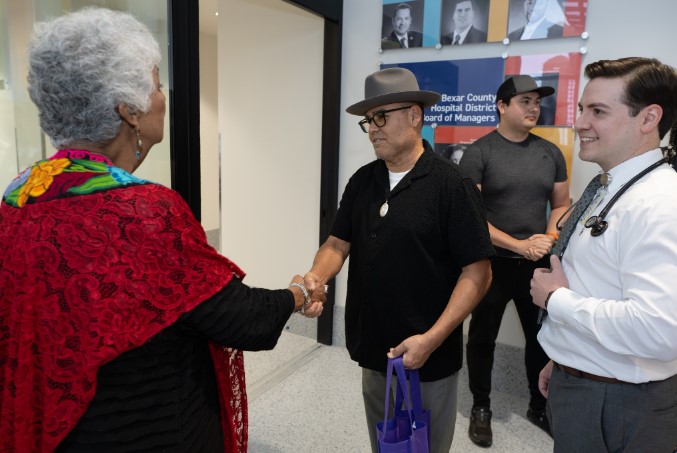By Edmond Ortiz
The creation of a state-run agency designed to face threats to Texas’ digital infrastructure has positioned the University of Texas at San Antonio at the forefront of cyberdefense efforts.
What happened
Based at the fledgling UTSA San Pedro I campus in downtown, Texas Cyber Command (TxCC) was recently launched to combat a growing variety of cyber-related challenges, and boost cybersecurity.
UTSA President Taylor Eighmy and John Zerwas, newly appointed chancellor of the UT System, were joined by special guests in an Oct. 20 ceremony at UTSA San Pedro I to welcome Timothy James “T.J.” White as the first chief of Texas Cyber Command, now the nation’s largest state-run cybersecurity agency.
There, gathered dignitaries formally recognized the partnership between UTSA and TxCC, which was established when Gov. Greg Abbott signed House Bill 150 into law following the 89th Texas Legislature. The state allocated $135 million in initial funding to launch TxCC.
What you should know
A retired U.S. Navy vice admiral, White said Texas Cyber Command will partner and collaborate with state universities, regional security operations centers, federal digital-focused agencies, among other institutions to help strengthen the state’s cybersecurity infrastructure.
Specifically, TxCC will fulfill the following missions:
*Anticipate and detect potential cyber threats from foreign or domestic sources;
*Promote cybersecurity awareness, professional training, and other workforce-oriented measures;
*Prepare for cyberattacks through various exercises, pre-attack coordination and planning, and proactive collaboration with vital infrastructure partners;
*Help defend against, respond effectively to, and mitigate against the impacts of cyberattacks when they happen;
*Provide subject matter expertise, forensic analysis, and other support to conduct post-attack investigations and recovery efforts
What they’re saying
According to White, a growing number of governments, businesses and other large-scale organizations are targeted in sophisticated cyber attacks, including ransomware on water systems such as the North Texas Municipal Water District in 2023, and assaults on local governments such as Matagorda County in 2025.
White said practically every individual and organization depends on operating in a safe, secure cyberspace. When a lengthy deep freeze struck Texas in February 2021, it produced prolonged power outages that, in a different yet extreme circumstance, would feel very much like a major cyber attack, White added.
“Every other state and everywhere across the globe has an extraordinary vulnerability in, through, and to cyberspace. It’s not malicious. It makes our lives easy. It improves our ability to do our jobs well,” White said. “We have a lot of work to do to secure it, and if called upon to defend it. The threat in short order – it’s bigger, it’s better, and it’s faster.”
White’s first task is to hire a leadership staff to help organize the cyber command, and he is concentrating the job search on individuals who have developed skills working mainly in cybersecurity, or who have undergone information technology studies at institutions such as UTSA.

White and Eighmy said it is no accident that Texas Cyber Command is headquartered at the UTSA San Pedro I campus, which is home to the newly launched College of AI (Artificial Intelligence), Cyber and Computing. UTSA Center for Data Science, formerly the UTSA School of Data Science, is part of the aforementioned new college.
San Antonio also has the largest concentration of cybersecurity professionals in the United States outside of Washington, D.C.
White said UTSA is greatly committed to advancing excellence in cyber security and education, adding that it is one of a handful of universities in the country to have all available certifications that can be awarded by the National Security Agency.
White also lauded UTSA’s partnerships and its aim to diversify its academic offerings, particularly in the realm of information tech.
“All three of those things come together to build the ecosystem of industry cybersecurity,” White added. “They’re doing it in the private sector, for the private sector, but also for public service, state, local, and federal government.”
UTSA officials have said the Center for Data Science will serve more than 5,000 students who are pursuing degrees in disciplines that are experiencing rapid growth. Since 2019, UTSA has seen a 31% rise in enrollment in AI, cyber and computing programs.
“If you were to add up all of the degree programs that we offer that have direct or tangential relationship to things related to cyber, AI, data and computing, about 10% of our undergraduate population is involved in these courses,” Eighmy explained. “That’s on the order of 3 500 students each year, so we’re going to have a massive presence downtown here.”






